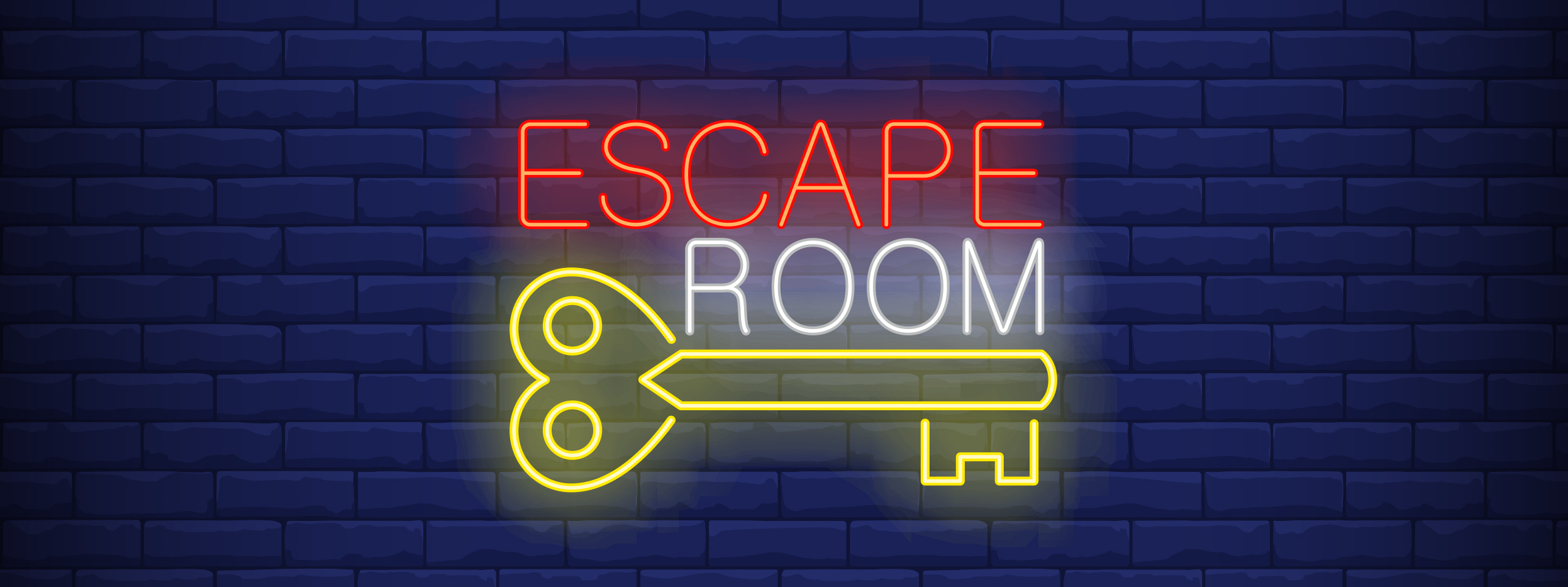
An escape room experience within the classroom involves a gamification idea for a fun and memorable experience to help improve student engagement and enhance their knowledge (Kapp, 2012; Tsay, Luo and Kofinas, 2018, Villagrava et al., 2014). The idea is a great way to improve the students learning environment along with increasing their digital capabilities.The development of an Escape Room experience involves a complex planning process with testing and refinements to be made (Villagrava et al., 2014). However the gamification approach can create a unique opportunity to offer fun team working elements which promote learning engagement through the advancement of the learners knowledge (Kapp, 2012; Tsay, Luo and Kofinas, 2018), and utilises problem-based learning to increase learners retention (Villagrava et al., 2014).
 Required elements
Required elements
- A learning outcome
- A story
- Digital and hands-on elements
- Teams of students
- A count down
- Debrief
 How to?
How to?
- Decide on your leaning outcome; increasing digital skills, alternatives to written assessments, how to use a piece of software, etc.
- Create a story to interlink between the learning for the learning outcome.
- Design the digital and hands-on elements of the session, linking to the learning outcome and story at the start, middle and end.
- Test and retest the escape room, allowing time to alter anything that doesn’t work.
- Put students into groups and set the date and time for the session.
- Run the escape room, incorporating a countdown clock helps add to the gamification element.
- Once everyone has completed, debrief the groups, discussing what they have learnt.
 Creation
Creation
The idea of an escape room session is to teach the students a particular learning outcome in a gamified way, making it more fun and engaging for the students. Gamification is becoming extremely popular within higher education, with surveys showing that 55% people would work for a company that included games to improve productivity (Kapp, 2012) making it an interesting element to consider for teaching and learning processes. Once you have a learning outcome you need to create a story around this, but this doesn’t have to be linked to the learning outcome but brings it all together. By having a start, middle and end you can then slot in the learning around your learning outcome, creating something exciting and fun for the students to learn from.
By students working within a group to solve the escape room problem it builds upon their soft skills; communication, team work, time management, etc. that are required for future employment. Not only allowing the students to engage with each element of the escape room but encouraging them to engage and increase their retention of information further with the whole course (Chandler, 2017; Fishman et al., 2012).
By creating something different for a session is exciting but there are certain elements you have to bear in mind. You have to test repeatedly with a variety of people to check that all elements work, giving yourself time to alter anything needed. However, it is important to have a plan b in case something fail on the day.
A debrief is extremely important at the end of a session to ensure the students have fully understood the learning outcome. It provides time for them to discuss with their peers what they learn and how they could implement that into other situations.
Creating an online style escape room could be a fun way for your students to learn, especially by using the tools they’ll be using throughout their course. To find out more about the tools you could use and how to implement them for an escape room see our Online Escape Room Tool Guide.
 Links
Links
References
Chandler, A. (2017). Creating Powerful Student Learning Experiences with Escape Rooms. Available at: http://www.gettingsmart.com/2017/03/creating-powerful-student-learning-experiences-with-escape-rooms/ (Accessed: 23 May 2018).
Fishman, B. & Aguilar, S. (2012). Gaming the Class: Using a Game-based Grading System to Get Students to Work Harder… and Like It. Poster presented at the Games+Learning+Society Conference 9.0, University of Wisconsin-Madison, WI.
Kapp, K. (2012) The Gamification of Learning and Instruction: game-based methods and strategies for training and education. San Francisco: Pfeiffer.
Tsay, C. H.-H., Luo, J. and Kofinas, A. (2018) ‘Enhancing student learning experience with technology-mediated gamification: An empirical study’, Computers & Education, 121, pp. 1–17.
Villagrava, S. et al. (2014) ‘Teaching Case of Gamifacation and Visual Technologies for Education’, Journal of Case on Information Technology, 16(4), pp. 38–57.
